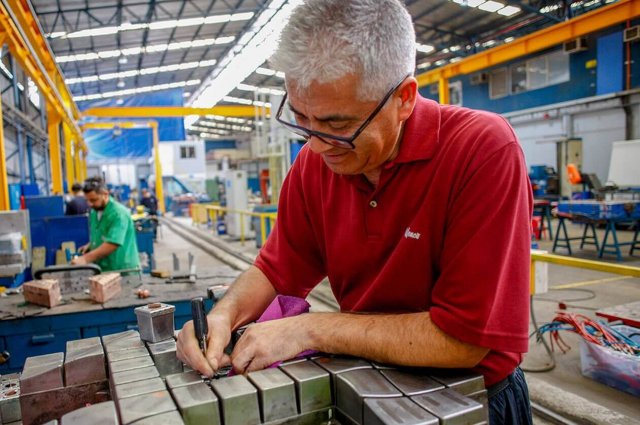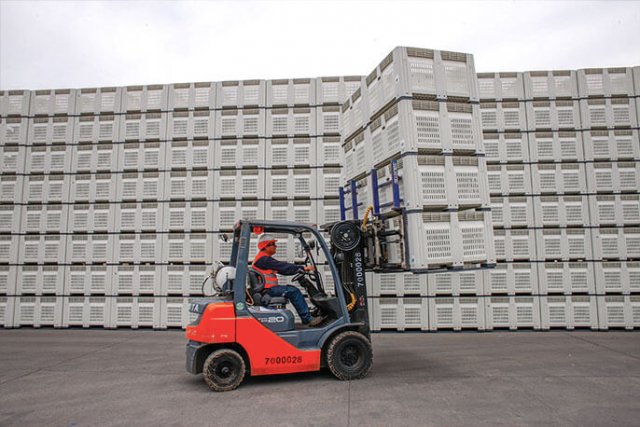
The Xpo crate was created for the fresh fruit export industry to optimize the post-harvest refrigeration processes, and thus improve the quality of the fruit on arrival at its destination, while also providing energy savings.
Wenco introduced the first model of the Xpo crate to the market in 1998. Since then new models and improvements continue to be developed. In early 2018, for example, Wenco began producing the 11th generation of the Xpo. While the 50 by 40 centimeter crate weighed 625 grams in 2011, gradual and ongoing innovations have reduced the weight of the 2018 model to 275 grams, which is to say less than half. The use of raw material has been reduced in the same proportion without diminishing the strength required to enable the crate to be loaded with fruit and stacked inside a container.

In addition to reducing weight, Wenco developed conical corner sockets for the Xpo, which allows the crates to be stacked more quickly and safely. Wenco also created a top locking mechanism, which lends more rigidity to the structure, and incorporated finger holes for easier manual handling at the destination.
The various sizes of Xpo crates are available in a one-piece version and as a self-assembly version. The latter is another innovation as it allows the customer to receive 680 crates on a pallet that would otherwise only hold 144 one-piece crates. The savings derived from reduced warehousing space and transportation costs, and the associated carbon footprint reductions are all clearly evident.
Today’s Xpo crates are manufactured from virgin polypropylene, without pigmentation from any type of masterbach (dye), which makes them very attractive for recycling.
The development of the Xpo crate reflects our commitment to meeting the three Rs of environmental concern: it has consistently reduced the material used, it is reusable at its destination, and it is 100% recyclable.

Wenco has the largest and most modern mold maintenance and handling facility in Chile, and the company employs highly specialized personnel.

In 1997 Wenco developed a bin that had a standard exterior size but which had 8% more interior capacity.

Wenco was a market pioneer in introducing blow molded pontoon platform floats that did not have to be filled with expanded polystyrene.